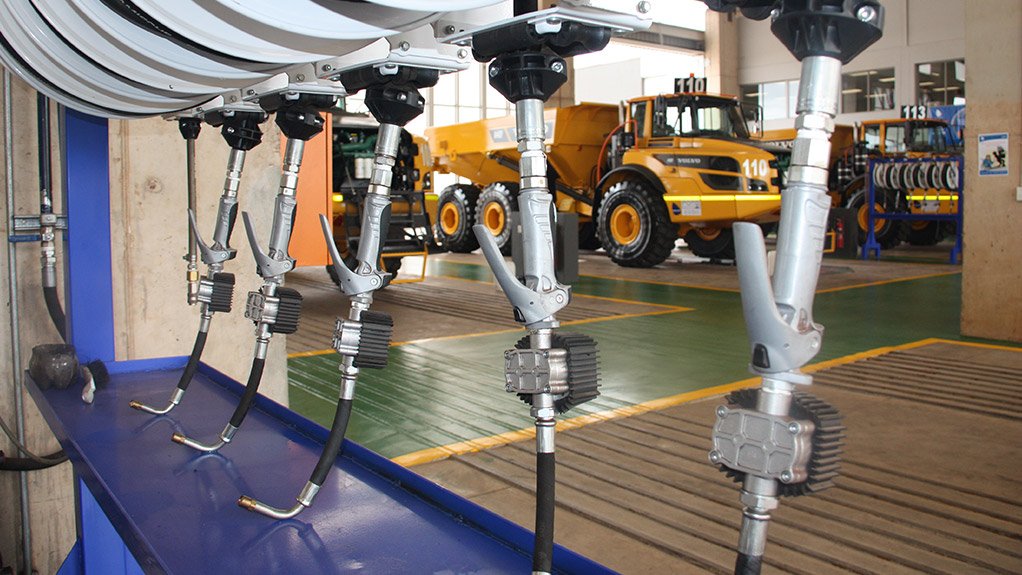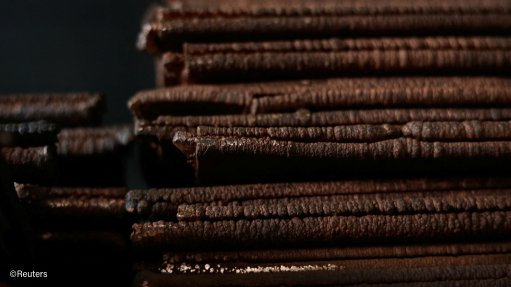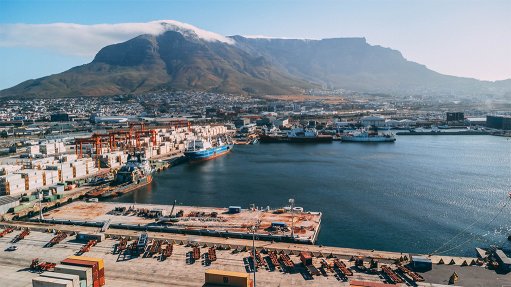Babcock custom engineers hydrocarbon waste management system for flagship branch
This article has been supplied as a media statement and is not written by Creamer Media. It may be available only for a limited time on this website.
Babcock’s new flagship branch in Middelburg has been described as one of the most advanced yellow-metal facilities of its kind, and for good reason. The design team spent several months planning the infrastructure of the facility to ensure that every detail was designed around Babcock’s specific requirements. All aspects of the new facility were custom engineered with efficiency in mind, from extra-large workshop bays to accommodate massive 150-tonne rigid trucks, to a bespoke oil separation system to manage the hydrocarbon water waste mix generated by the facility.
Babcock is the exclusive distributor of leading international brands and equipment including Volvo Construction Equipment, Terex Trucks, SDLG construction equipment, Tadano mobile cranes and Winget concrete handling machinery. The new branch in Middelburg serves as a regional hub for sales, parts, service and support and was purpose-built to accommodate the full range of construction equipment represented by Babcock, including the mammoth TR100 trucks, the largest of the Terex rigid dump truck range. Requiring 138 litres of engine oil to be replaced during a service, these trucks alone call for an efficient used oil waste management system. The facility generates approximately 4 000 litres of used oil per month from servicing and maintaining predominantly mining construction equipment and trucks, as well as hydrocarbon contaminated water from cleaning and washing, so an efficient hydrocarbon waste management systems is critical to prevent environmental oil contamination and to manage hydrocarbon waste in a safe and environmentally friendly manner.
“Due to the high levels of sediment present on construction equipment, comprising mostly clay and coal dust as well as the usual oil, grease and hydraulic hydrocarbons, classic underground grease traps are insufficient and unreliable. They are actually an outdated design and an environmental hazard in environments that have a high sediment load in the waste water,” says Michael de Weijer, Babcock’s Project Manager for the new branch. “Instead, the facility was designed with this in mind, and all workshops and wash bays drain into a common oil separation system integrated into the building. All used water that can contain oil, sand and coal dust from the workshops, spray booths, wash bays and boiler shop drain directly into a subterranean system comprising a common settling tank, an accumulation sump and oil separator, located in the refuse area,” explains de Weijer. “As oil, coal and sediment combine with water in the cleaning and servicing of this equipment, high sediment loads can block the drain pipes, so even the gradient of the drainage system was increased to 4.5% to speed up the flow rate and reduce possible sediment blockage. When the hydrocarbon contaminated waste reaches the settling tank, the flow rate reduces and the waterborne sediments settle in a 1.25-metre-deep chamber. The sediment-free water and hydrocarbon waste is skimmed off the surface of the settling tank by flowing over a small dam wall into a second chamber acting as a sump.
The sump is emptied by a simple compressed air double-diaphragm pump activated by limit switches and this water hydrocarbon mix is then pumped into a classic oil/water separator. Oil is trapped in a central chamber in the separator while oil-free water is discharged into the municipal waste. The separated hydrocarbon waste in the oil trap is pumped into one of three integrated used oil tanks, which collectively hold up to 7 500 litres of oil. When all three tanks are full, the site’s used oil is removed and recycled by commercial used oil vendors. It takes about two months for all three tanks to fill up. An alarm has been installed for a pending overflow warning condition, but if there is a spill, the oil just goes back into the sump,” says de Weijer.
Usually built underground, Babcock specified that the settling tank, sump and separator be installed above ground for ease of access, servicing and inspection should this be required, for conducting hydrocarbon contamination tests by municipal authorities.
To avoid an overload of water entering the oil/water separator which has a design capacity of 2 000 litres/hour, all non-hydrocarbon contaminated storm water is discharged to the site’s storm water system.
Another bespoke feature at the facility is an integrated piped lubrication system that pipes the five most common oils and compressed air directly to the workshop bays and returns the used oil to the used oil storage tanks.
“I have never seen such a workshop installation and Babcock is no doubt unique in this facility,” says Pierre Duvenhage, Director at Lubrication Equipment, the company that installed the new and used oil reticulation system for the workshops and the waste water pump and control system for Babcock. “The hydrocarbon/municipal waste water separation is cost-effective, efficient and requires no maintenance; all in all, it’s just brilliant,” enthuses Duvenhage.
“As a company that never compromises on health and safety, we strive to constantly update and improve our practices, and we are very proud to have created an entirely bespoke facility that places utmost importance on the environment and the surrounding communities,” concludes de Weijer.
Comments
Press Office
Announcements
What's On
Subscribe to improve your user experience...
Option 1 (equivalent of R125 a month):
Receive a weekly copy of Creamer Media's Engineering News & Mining Weekly magazine
(print copy for those in South Africa and e-magazine for those outside of South Africa)
Receive daily email newsletters
Access to full search results
Access archive of magazine back copies
Access to Projects in Progress
Access to ONE Research Report of your choice in PDF format
Option 2 (equivalent of R375 a month):
All benefits from Option 1
PLUS
Access to Creamer Media's Research Channel Africa for ALL Research Reports, in PDF format, on various industrial and mining sectors
including Electricity; Water; Energy Transition; Hydrogen; Roads, Rail and Ports; Coal; Gold; Platinum; Battery Metals; etc.
Already a subscriber?
Forgotten your password?
Receive weekly copy of Creamer Media's Engineering News & Mining Weekly magazine (print copy for those in South Africa and e-magazine for those outside of South Africa)
➕
Recieve daily email newsletters
➕
Access to full search results
➕
Access archive of magazine back copies
➕
Access to Projects in Progress
➕
Access to ONE Research Report of your choice in PDF format
RESEARCH CHANNEL AFRICA
R4500 (equivalent of R375 a month)
SUBSCRIBEAll benefits from Option 1
➕
Access to Creamer Media's Research Channel Africa for ALL Research Reports on various industrial and mining sectors, in PDF format, including on:
Electricity
➕
Water
➕
Energy Transition
➕
Hydrogen
➕
Roads, Rail and Ports
➕
Coal
➕
Gold
➕
Platinum
➕
Battery Metals
➕
etc.
Receive all benefits from Option 1 or Option 2 delivered to numerous people at your company
➕
Multiple User names and Passwords for simultaneous log-ins
➕
Intranet integration access to all in your organisation





















